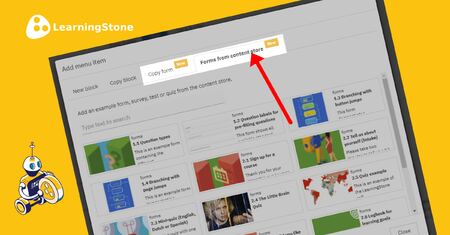
We love learning!

Welcome to the world of Learning and Development (L&D)! It’s the space where people-focused professionals work their magic to improve skills, foster growth, and empower people to shine in their roles. If you’re new to the field, there’s no need to worry—we’re going to take a friendly, jargon-free stroll through the basics. We love learning!

We love learning!

Let’s clear this up: learning and development may sound like twin siblings, but they’re a bit different. Here’s a quick breakdown:
So, in short: learning fills up the toolkit, and development is about putting those tools to work, over and over again.
E-learning—the “e” stands for “electronic,” not “easy” (sorry!)—is a way to learn using digital resources. It could be an online course, video lesson, interactive tutorial, or even a gamified learning experience. With e-learning, people can learn anywhere and at their own pace, which is a big win for flexibility. We often call this "self-paced e-learning."
E-learning can vary from quick lessons to full-length courses that last weeks or even months. There are lots of advantages, but in practice, pure elearning isn’t always successful as it can be unmotivating and misses the human factor.
In the L&D world, training is a structured way to build skills and knowledge. It’s designed to help people perform tasks or fulfill responsibilities better and usually has specific objectives.
Classroom training (aka "live" or face-to-face training) has lots of benefits – especially the human factors - but is expensive and you miss a lot of the benefits of online environments. Virtual training with Zoom or Teams is cheaper but misses a lot of the benefits of live training. Combinations of live and virtual (we call that hybrid) training, can help balance the costs and benefits.

Now, we’re getting fancy. Blended training (or coaching) combines the best of both worlds: traditional, face-to-face training and e-learning or other online and offline methods. It’s like the coffee and cream of the training world—bringing together the strengths of both approaches to create a learning experience that’s flexible, dynamic, and effective.
In a blended training setup, learners might spend some time online, and then meet in person (or virtually) to apply what they’ve learned in group settings or hands-on activities. This allows for self-paced learning as well as interactive, guided practice.
Blended training is getting popular, and for good reasons. Here are a few of the biggest benefits:
All of this together means blended training can feel less like an obligation and more like an interactive experience. And who doesn’t want learning to be engaging instead of just “something to get through”?

If you’re considering blended training, LearningStone is a a good platform to check out. Here’s why it’s catching attention in the L&D world:
With its focus on making blended learning seamless and supportive, LearningStone is the “blender” that makes the blended learning smoothie taste just right.
Learning and development might seem like a complex field at first, but at its heart, it’s all about helping people grow. From traditional training to e-learning and blended training, there’s a variety of ways to support learning journeys and help people reach their potential. LearningStone make it easier to implement effective blended learning, and the benefits—like flexibility, engagement, and efficiency—are hard to beat.

Recently, LearningStone's "Content store" was launched: an easily accessible list of examples of course timelines - the multimedia learning paths at the heart of any training or coaching program.

Will Thalheimer – a learning and development research-to-practice translator, writer, trainer, evaluator, and thinker – has just published an insightful new book, "The CEO’s Guide to Training